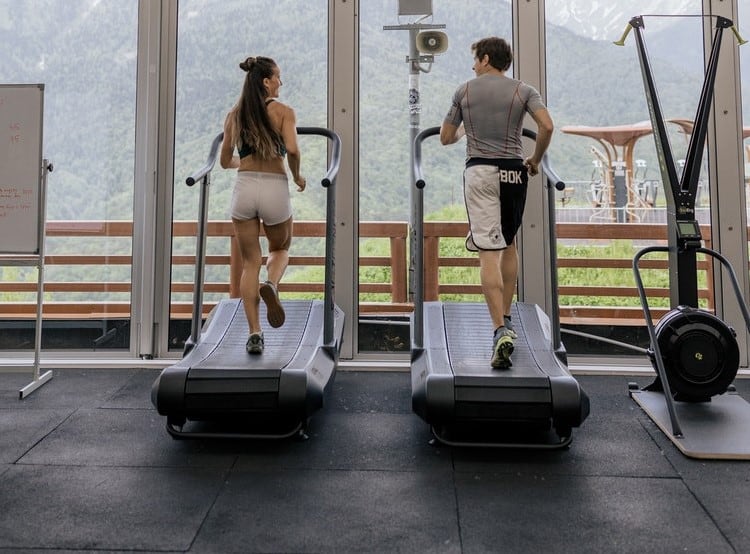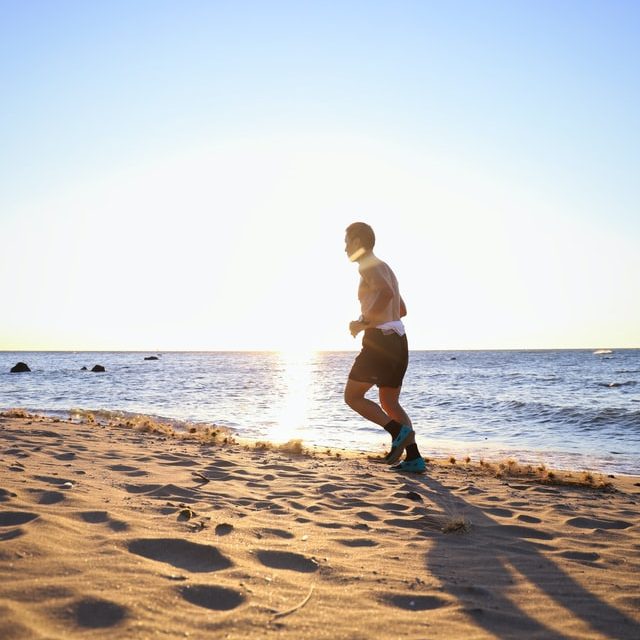Running seems like one of the most basic forms of exercise, yet study finds, there is an enormous amount of health and mental benefits from jogging. The majority of us ran around when we were kids in various ways, whether we were playing sports or just having fun. Some of us can get up off the couch and go for a run within a couple of minutes of warming up to this day.
But, different types of running can change the training effect of the exercise itself. There is a clear difference between sprinting for 5 seconds and going for a slow jog for a couple of miles. Let’s examine the different types of running and what they do for our physical fitness now!
Treadmills Vs Actual Running
There will always be fans of running on a treadmill and others who prefer to do their running on the actual ground. Both have merit and different reasons for optimal training results.
On one hand, actual running produces a more natural gait. This is useful for functional training. Basically, the more you run on the trail, the better you’ll get running on a trail. Treadmills are a strictly linear path with even surfaces that produce less training effect on strength and endurance for stabilizer muscles that work harder on uneven surfaces.

Treadmills are an obvious choice for those with joint issues where repeated impacts can become a problem. Treadmills provide a safer running surface to reduce the impact on joints, like knees and hips. If you are coming back from an injury, it could be a good idea to start jogging on treadmills so you avoid getting injured again. Nowadays there are many different types of treadmills for the most specific needs.
However, for those who have healthy joints currently, actual running is better at strengthening bones and joints than treadmill running!
If you are just chasing a home cardio workout, treadmill running offers the same aerobic requirements as running outside. With a treadmill, you won’t have to worry about the weather, traffic, or your local running tack being too crowded.
To sum it up: running outside is best for those training to be better at running while running on a treadmill can be a great alternative for those who have joint issues or are just chasing a good cardio workout.
Terrain Differences
If you are running outdoors, you have a ton of options for different types of running. Here are some of the running surfaces you may encounter:
- Street (asphault/concrete)
- Track
- Court (basketball, tennis, etc.)
- Field
- Sand
- Rocky trails
- Barefoot running
All of these different surfaces create a different training experience. If you are training for a sport, the more sports-specific your running terrain can be, the better.

If you are just training to improve your endurance levels, switching up your running terrain from time to time will improve your endurance capacity even more. This is because the more you perform the same exercises, the more efficient your body will become at that specific exercise, burning fewer calories and requiring less oxygen.
Change train can help your on staying motivated during running and preventing injuries like shin splits.
A simple switch from a track workout to a beach workout can tax your aerobic system more than you think!
Slope Running
Just like you can switch up your terrain for running, you can also change up the incline.
Anything from flat ground to steep inclines is fair game. Running on a decline isn’t recommended as it causes excessive forces to be placed on your joints. If you have a race coming up that will have a lot of decline running, practice it sparingly for skill work, not aerobic training.

The steeper the slope that you run up, the less extreme the forces become on your ankles, knees, and hips. This makes running hills a great choice for those with injuries who still want an intense workout.
You can utilize natural slopes or a treadmill to create an inclined running surface. Incline running tends to stress your muscles more, creating a more drastic training effect. Everyone who has run up a hill knows how much harder it is than running on a flat track!
Sprinting Vs Jogging
A slow jog can be awesome for extended duration aerobic workouts. Short, all-out sprints lasting up to 8 seconds with ample rest between repetitions is fantastic for anaerobic capacity. Both exercises are running, but the training response couldn’t be more different!
Improving your running involves high specificity. Sprint workouts won’t be a great choice for those who want to run a 10k race. Likewise, 3-mile jogs aren’t very productive for those looking to improve their 200m times.

But, for those only looking for maximum physical fitness, utilizing all different speeds and durations of running is a great idea. This will produce a jack-of-all-trades level of fitness where you don’t have super impressive numbers across all modalities, but all of them are respectable.
Simply put, to be the best sprinter, you have to focus on how to run faster. Long-distance runners will improve the most if they concentrate on running further.
Types Of Running Drills
There are a ton of running drills that you can do to get better at specific skills.
For sprinting, you can use Wind Sprints, Hill Sprints, and Flying Sprints for training. Switching up your sprinting lengths and rest between repetitions will also alter your training stimulus.
For longer-distance runs, switching up the total distance of the run and pace-racing are good drills to practice.
Other forms of exercise can improve running as well, including plyometrics and strength training.
Final Words On Running
Different types of running are all part of the same movement pattern. However, the training effects between them are drastic and worth exploring for those looking to achieve maximum fitness levels. You won’t become the fastest sprinter and cross-country runner in the same lifetime, but having ample experience with all forms of running is one of the most basic forms of functional fitness!
